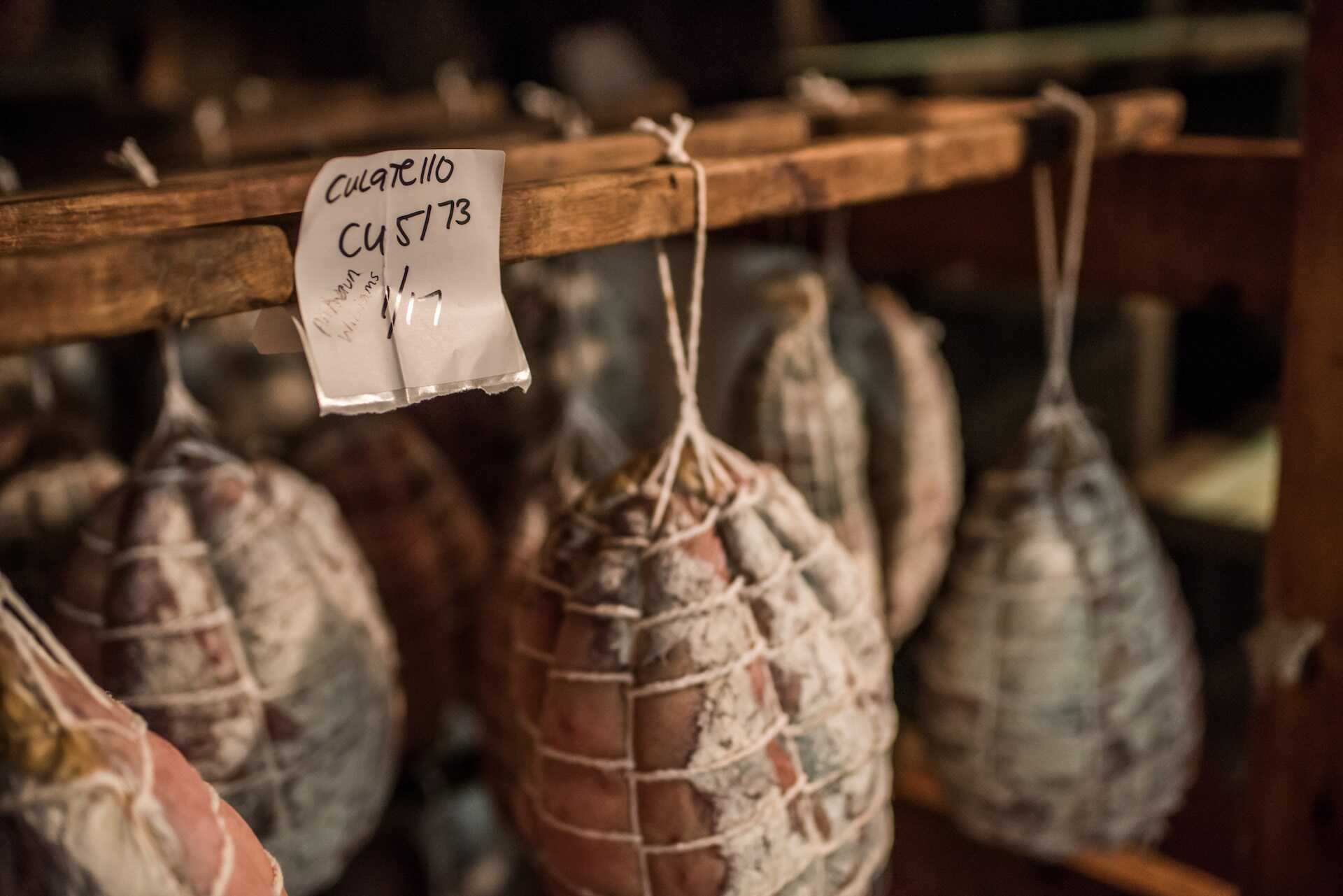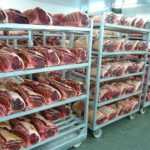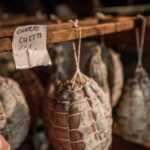
Cure, Maturation It is Fermentation These are fascinating and extremely rich processes for the flavor, texture and preservation of food. Understanding these processes is a valuable ally for those who produce food, whether at home, in industries or in artisanal productions.
Maturation
Meat maturation is the process that consists of keeping the meat fresh, immediately after slaughter and rigor mortis (muscular rigidity), at a temperature above the freezing point and makes the meat more tender and aromatic. The main responsible for these changes is enzymatic activity. Maintenance after slaughter for 8 to 14 days at temperatures of 0 to 21ºC has been practiced for many years and remains an important procedure in the production of tender meat and in the development of flavors and aromas characteristic of the maturation process.
There are different maturation methods and the main ones are:
- Dry maturation, where the meat is kept at temperatures between 1ºC and 3ºC for 6 to 10 weeks in controlled humidity;
- Rapid maturation, where meat is kept at higher temperatures, around 21ºC, for 2 days or less, with controlled relative humidity and ultraviolet light, in order to reduce microbial contamination;
- Vacuum maturation, where the meat is kept cold in vacuum packaging.

Some changes occur during the meat maturation process, among the most important are the end of rigor mortis, weakening of the connective tissue and development of aroma and flavor. The most desired effect when using meat aging is the increase in tenderness followed by the characteristic flavor and aroma.
Temperature is the most important factor in maturation and, over time, it is the only variable that affects maturation and can be controlled. Generally lower storage temperatures during maturation result in less tender meat, and higher temperatures can greatly accelerate the natural enzymatic action in fresh meat and the extent of tenderization.
Cure
Curing in charcuterie is the gradual reduction of the amount of water present in the meat, also known as water activity or aw. The cure is carried out by the action of time and the use of salt. Salt in high quantities removes water from the inside of the meat quickly, but in some long curing processes, such as in the production of cured hams and salami, the action must be slow and gradual. The combined action of salt, time and temperature is the key component in the success of any cured product. Salt is essential for the protection given to the product during curing, it is the main protection barrier. Meat exposed to the weather for months and sometimes years, such as Parma ham, is only possible due to the protective action of salt and the reduction of water activity.
As you can see in the video below, Parma ham is a perfect example of the curing process, as it only uses salt as an ingredient. There are no preservatives, additives or additional seasoning. It is an ancient masterpiece arising from the need for conservation.
In charcuterie, curing is often understood, from my point of view incorrectly, as the action of curing salt, which acts on the protein, giving it a reddish color, preservation and characteristic flavor. But curing salt alone (sodium nitrate/sodium nitrite) is not enough to cure meat, as it is used in a reduced volume and always combined with table salt, so the curing itself is the result of the action of salt. (sodium chloride) and not the curing salt. In this way, the curing salt is an optional and not mandatory adjuvant. To understand more about curing salt, read the post Curing salt what it is and how much to use.
Fermentation
Fermentation is the microbiological action that occurs naturally or on purpose in the components present in foods and in some drinks, such as beer. The best beers in the world are still produced with initial exposure to the environment so that there is a natural proliferation of beneficial organisms. Fermentation can produce lactic acid, carbon dioxide and alcohol. In baking, the main benefit comes from the release of carbon dioxide, which makes the dough rise, whereas in the production of drinks, alcohol is sought after. In charcuterie, fermentation is used as a protection barrier and flavor enrichment. The essential mechanism in charcuterie is the conversion of starches into lactic acid, reducing the pH and preventing other harmful microorganisms from proliferating in the product. This action, essentially bacterial, promotes the improvement of the texture, flavor and aroma of the products. The use of fermentation is often used in combination with curing. Currently, there are several isolated cultures that can be acquired and inoculated during the production of meat foods. Over time, the available starch and water run out and bacterial action is drastically reduced, leaving the product protected for extremely long periods.

Fermentation is widely used in cooking. It is used to produce sauerkraut, yogurt, bread, cheese, wine, soy sauce among many others. In addition to the practical benefits, fermentation also gained strength due to the claim of benefit to the digestive system due to the probiotic action conferred on fermented products.
References:
https://pt.wikipedia.org/wiki/Fermentação_lactica
https://opentextbc.ca/meatcutting/chapter/aging-of-meat-carcasses/
http://www.fao.org/docrep/010/ai407e/AI407E14.htm




Hello, thank you for always bringing knowledge, I've already made one of your recipes, I had a question, can I mature a fresh barbecue sausage, whether cooked in the oven or frozen, bought in the market?
Yes, what you can do is hang it and leave it to dry to have a cured, dry sausage.
Hello, I'm studying to make some products and my question regarding salami is whether it can be bagged without those cannons, can you help me?
I don't have one either and I do the embedding with my own grinder that I have without the crosshead and with a rim disc.
friend, what is the contact number, I already tried what you advertise and I didn't get a response, thank you
In the text “Cured Fermented or Maturated?”, where fermentation is discussed, the section “(…)conversion of starches into lactic acid, increasing the pH (…)” is included. This is a mistaken statement, as the production of lactic acid actually decreases pH (increases acidity).
Furthermore, congratulations on the content! I'm a beginner charcuterie enthusiast and I really liked your material.
Hi Rafael, that's right, it was corrected in the text, thank you!
Good evening, this article about sausages is very important. I am a beginner in the field of charcuterie. This article is very important for my improvement in this area.
Beautiful work !